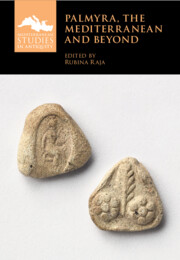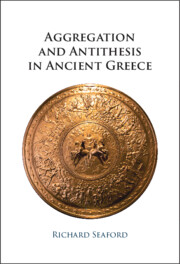Refine search
Actions for selected content:
3394195 results

A History of Music in the Czech Lands
-
- Published online:
- 21 October 2025
- Print publication:
- 16 October 2025

Palmyra, the Mediterranean and Beyond
-
- Published online:
- 21 October 2025
- Print publication:
- 16 October 2025

Ethnography in International Business
- Learning from the Field
-
- Published online:
- 21 October 2025
- Print publication:
- 09 October 2025

Pious Politics
- Cultural Foundations of the Islamist Movement in Turkey
-
- Published online:
- 21 October 2025
- Print publication:
- 30 October 2025

Aggregation and Antithesis in Ancient Greece
-
- Published online:
- 21 October 2025
- Print publication:
- 28 August 2025

Insight-Driven Problem Solving
- Analytics Science to Improve the World
-
- Published online:
- 21 October 2025
- Print publication:
- 30 October 2025

Wireless Communications and Machine Learning
-
- Published online:
- 21 October 2025
- Print publication:
- 03 July 2025
-
- Textbook
- Export citation

Language, Gender and Pregnancy Loss
-
- Published online:
- 21 October 2025
- Print publication:
- 13 November 2025
-
- Element
-
- You have access
- Open access
- HTML
- Export citation

The Indispensability of Intuitions
-
- Published online:
- 21 October 2025
- Print publication:
- 13 November 2025
-
- Element
- Export citation

From Club to Commons
- Enlargement, Reform and Sustainability in European Integration
-
- Published online:
- 21 October 2025
- Print publication:
- 20 November 2025
-
- Element
-
- You have access
- Open access
- HTML
- Export citation
Practical Tools for Female-specific ADHD: the impact of hormonal fluctuations in clinical practice and from the literature
-
- Journal:
- European Psychiatry / Accepted manuscript
- Published online by Cambridge University Press:
- 21 October 2025, pp. 1-20
-
- Article
-
- You have access
- Open access
- Export citation
Analysis of Fabry–Perot cavity antennas based on thick partially reflecting sheets through a field matching technique
-
- Journal:
- International Journal of Microwave and Wireless Technologies , First View
- Published online by Cambridge University Press:
- 21 October 2025, pp. 1-8
-
- Article
-
- You have access
- Open access
- HTML
- Export citation
Human Rights and the Lomé Convention: Debates between the European Community and the Developing World, 1988–91
-
- Journal:
- Contemporary European History , First View
- Published online by Cambridge University Press:
- 21 October 2025, pp. 1-17
-
- Article
-
- You have access
- Open access
- HTML
- Export citation
Clinical factors and diagnoses associated with inappropriate urine culture ordering in primary care
-
- Journal:
- Infection Control & Hospital Epidemiology , First View
- Published online by Cambridge University Press:
- 21 October 2025, pp. 1-8
-
- Article
-
- You have access
- HTML
- Export citation
Higher power sums of Fourier coefficients of symmetric square L-functions
- Part of
-
- Journal:
- Proceedings of the Edinburgh Mathematical Society , First View
- Published online by Cambridge University Press:
- 21 October 2025, pp. 1-22
-
- Article
- Export citation
Standardised scoring system to assess the welfare of Yangtze finless porpoises (Neophocaena asiaeorientalis asiaeorientalis)
- Part of
-
- Journal:
- Animal Welfare / Volume 34 / 2025
- Published online by Cambridge University Press:
- 21 October 2025, e68
-
- Article
-
- You have access
- Open access
- HTML
- Export citation
The Subject Position and Network Entrepreneurship of Parent Organizations in China
-
- Journal:
- The China Quarterly , First View
- Published online by Cambridge University Press:
- 21 October 2025, pp. 1-17
-
- Article
-
- You have access
- Open access
- HTML
- Export citation
Effects of methylphenidate on growth, blood pressure, and heart rate in children and adolescents with ADHD
-
- Journal:
- Irish Journal of Psychological Medicine , First View
- Published online by Cambridge University Press:
- 21 October 2025, pp. 1-8
-
- Article
-
- You have access
- Open access
- HTML
- Export citation
Possible Maps: Newfoundland, 1763–1829
-
- Journal:
- Transactions of the Royal Historical Society , First View
- Published online by Cambridge University Press:
- 21 October 2025, pp. 1-32
-
- Article
-
- You have access
- Open access
- HTML
- Export citation
Cardiometabolic risk accounts for associations between personality and cognition in midlife
-
- Journal:
- Journal of the International Neuropsychological Society , First View
- Published online by Cambridge University Press:
- 21 October 2025, pp. 1-14
-
- Article
-
- You have access
- Open access
- HTML
- Export citation








